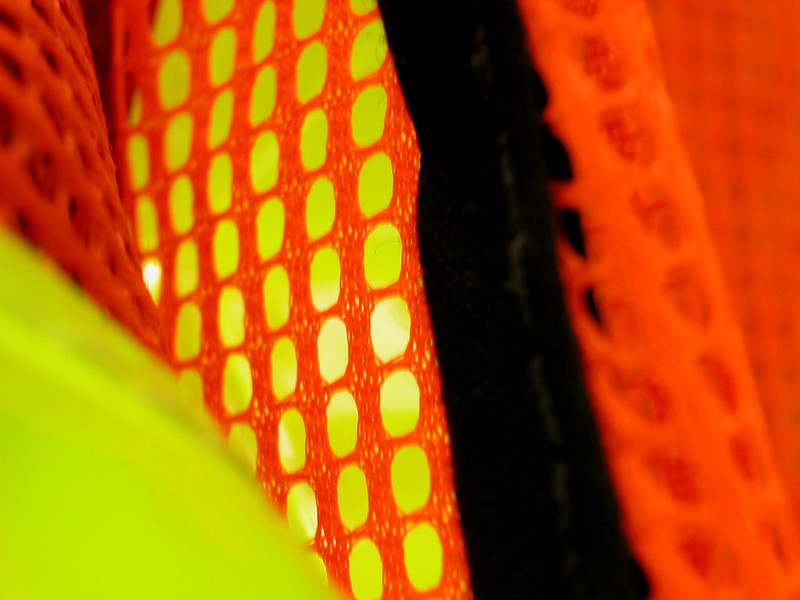As the Los Angeles Times reported earlier this month, paintings made with Day Glo paint, some by Frank Stella, Andy Warhol and other well-known and influential artists, are losing their glow over time.
And one of the big problems conservationists are running into is that Day Glo’s complex chemical paint formulas are still trade secrets, and even if they weren’t, the modern versions are different from the classic ones. There’s a lot we don’t know about what’s in those paints.
So here’s what we do know. Day Glo came from the Switzer brothers of Berkeley, California, who mixed an eye wash solution, rubbing alcohol and white shellac into a paint-like substance that absorbed UV light, essentially glow in the dark paint.
This science already existed, but the Switzer brothers found a practical use for these brighter colors: advertising! Tide detergent said it switched to the flourescent orange for its packages in 1959 and sales soared, so lots of companies tried the same thing. Once day glo became a symbol of commercialism, artists decided to use those same unnaturally bright colors for a variety of reasons, including sometimes to comment on the commercialism Day Glo paints helped make happen.
Which brings us to back to those now-fading paintings. The irony of trying to preserve these colors is that they’re actually so bright they hurt your eye, so really, we’re trying to make it so that these paintings continue being painful to look at for years to come.
Day Glo colors are unnaturally bright, now let’s go in the other direction. For some time now a color called Vantablack has been the standard for light absorbing, how-can-it-be-that-dark color. But a research team in Massachusetts figured out that with the use of carbon nanotubes aligned in just the right way, they can make a color that absorbs 99.995 percent of incoming light.
So no matter what the Netflix series tells you, ultra-ultra-black is the new black.
Day-Glo masterpieces are fading. A conservator and her team are racing to save them (Los Angeles Times)
How DayGlo Went From Utility Pigment to Design World Darling (AIGA Eye on Design)
Engineers Just Unveiled a New Blackest-Ever Material, Even Darker Than Vantablack (Science Alert)
Make life more colorful when you back Cool Weird Awesome on Patreon

